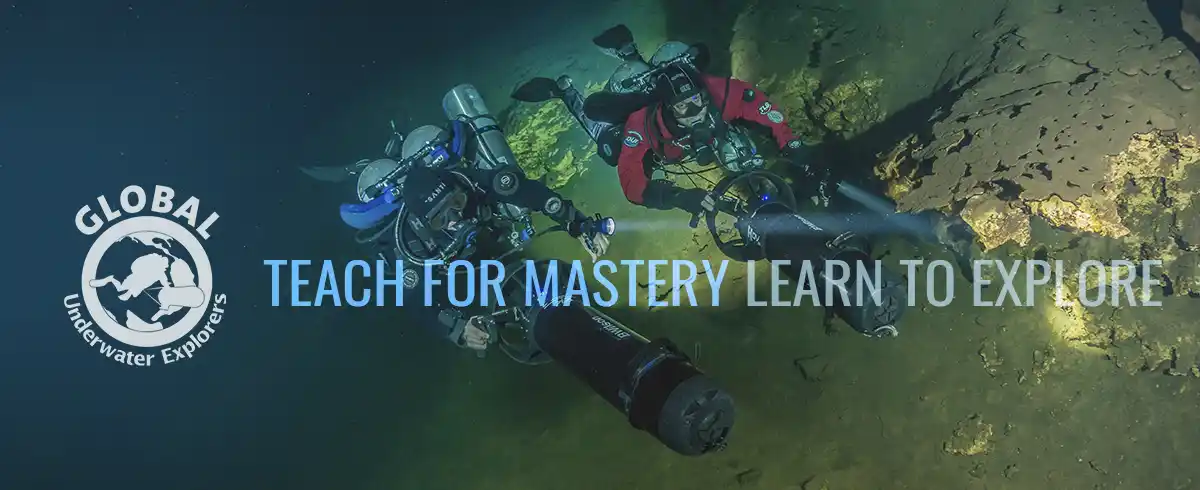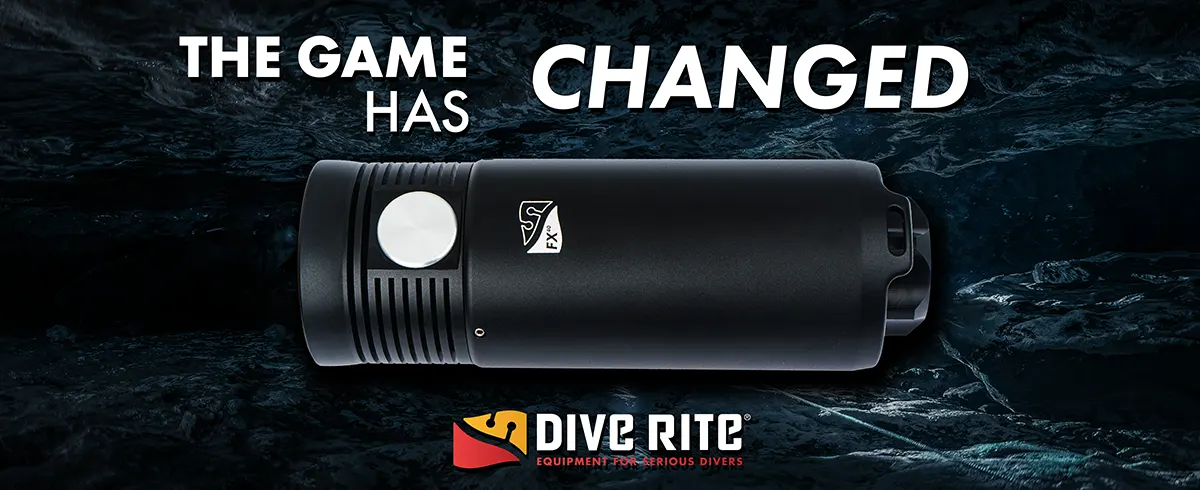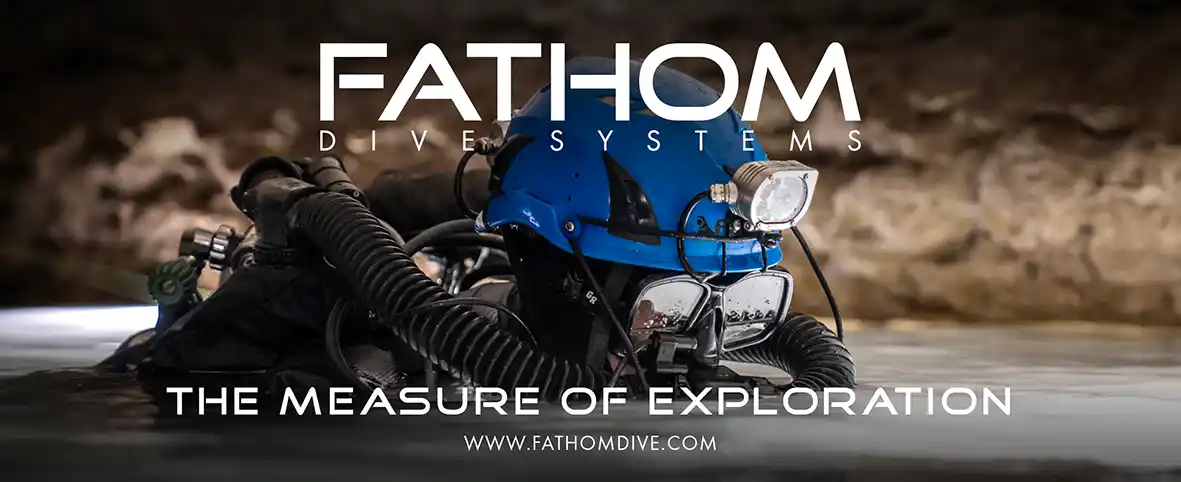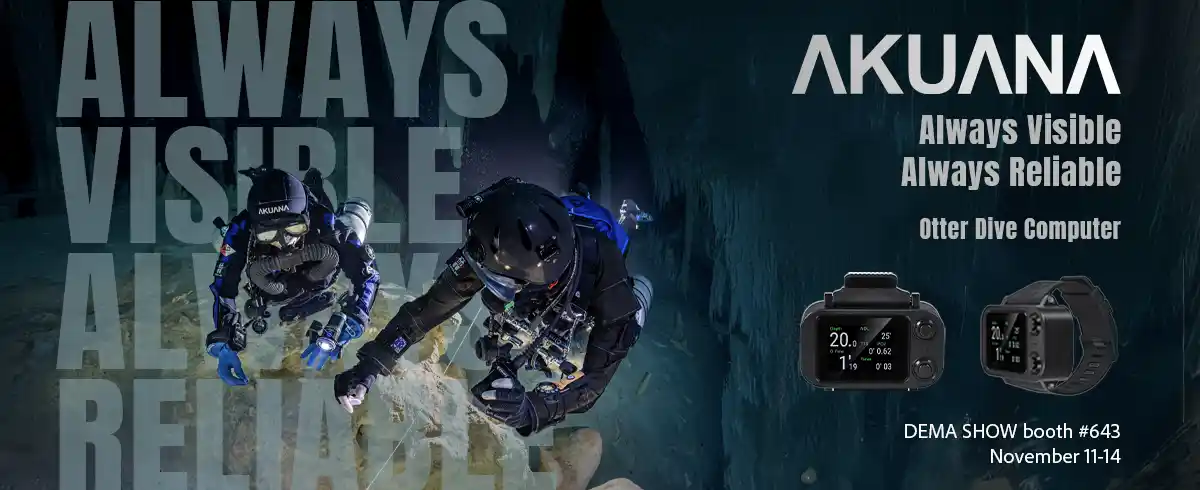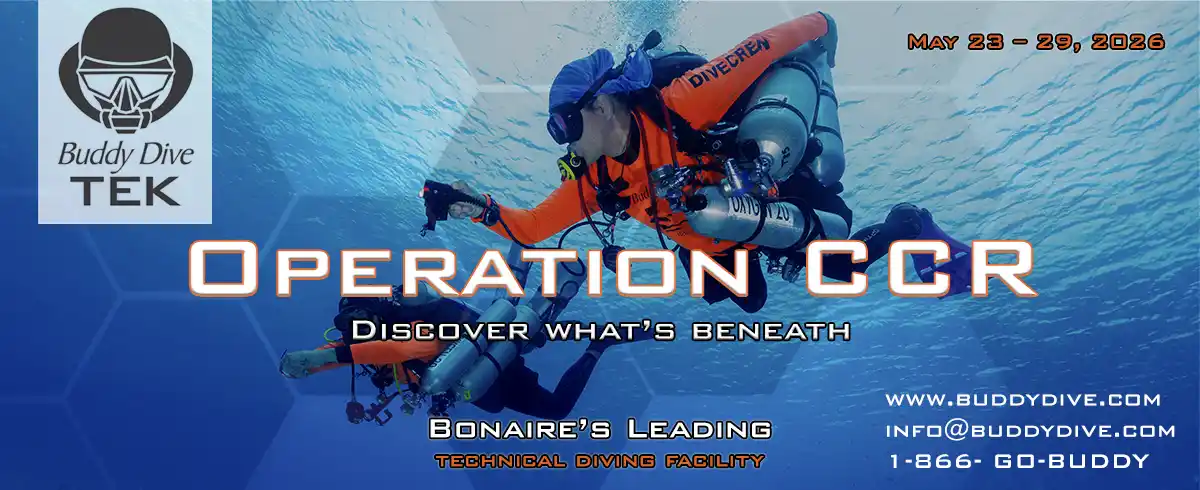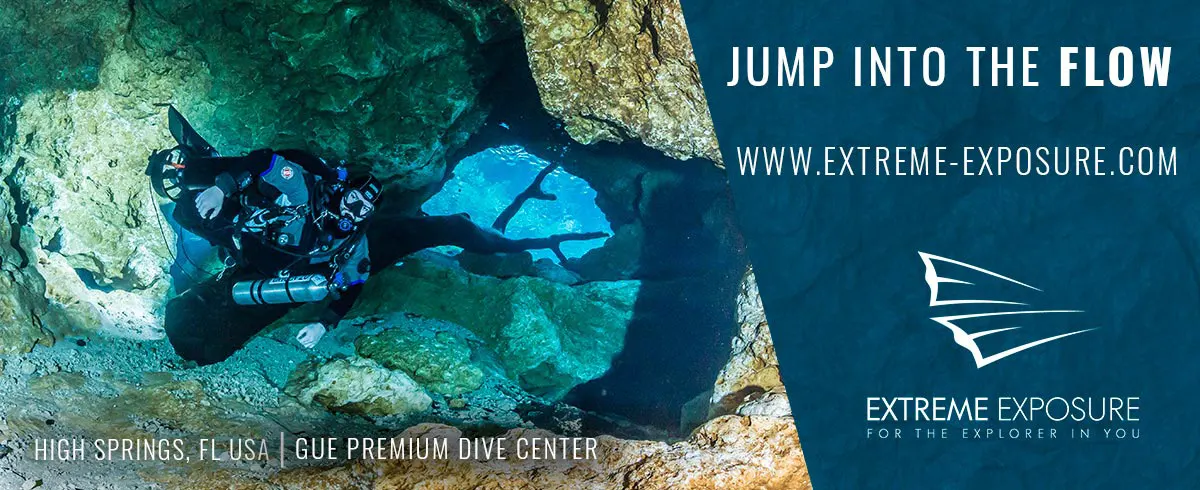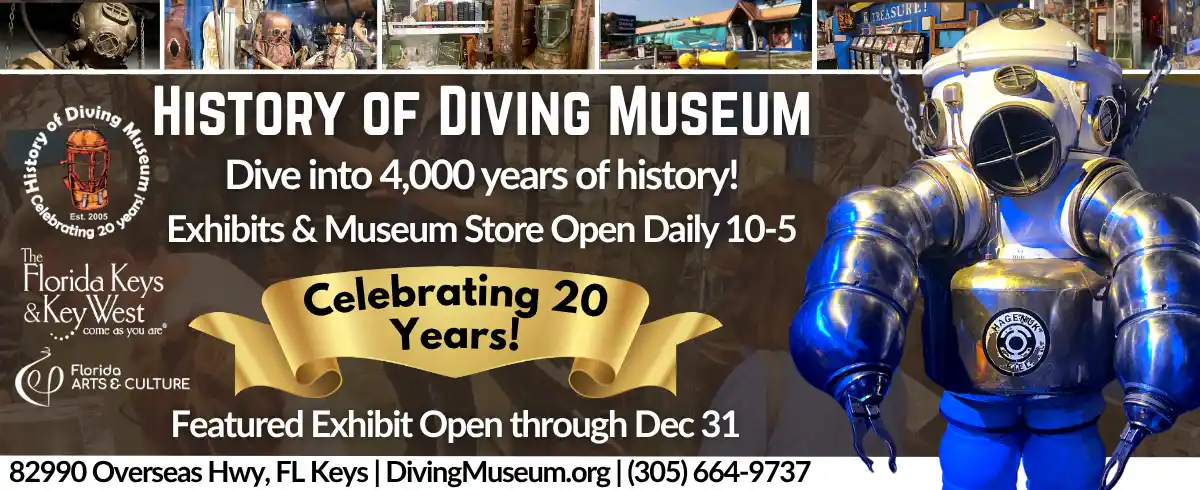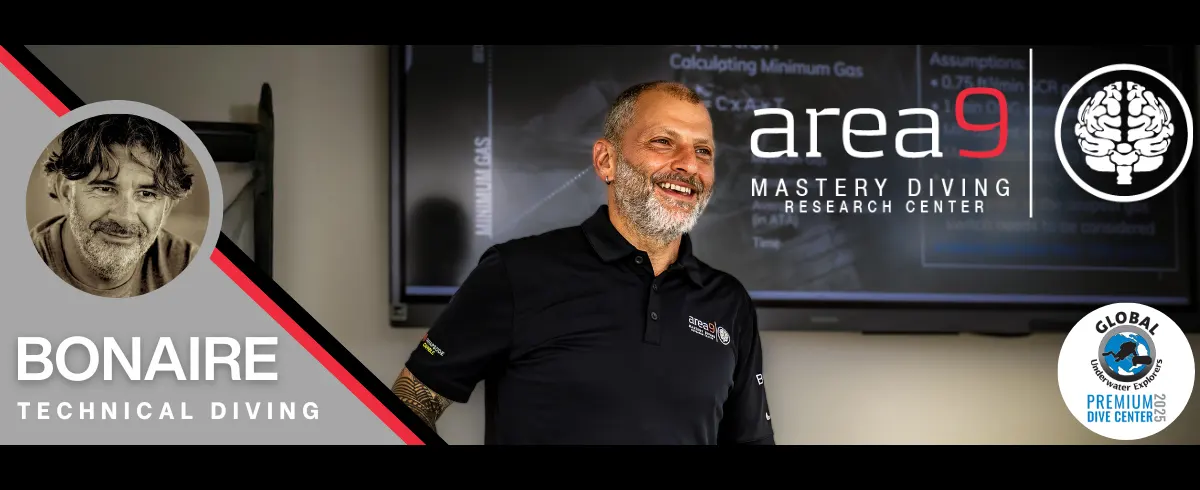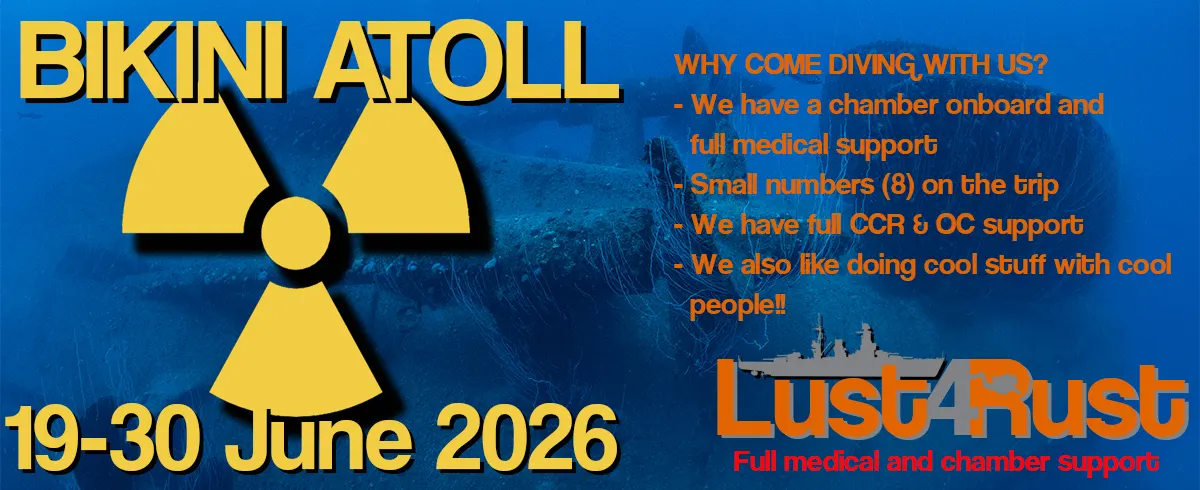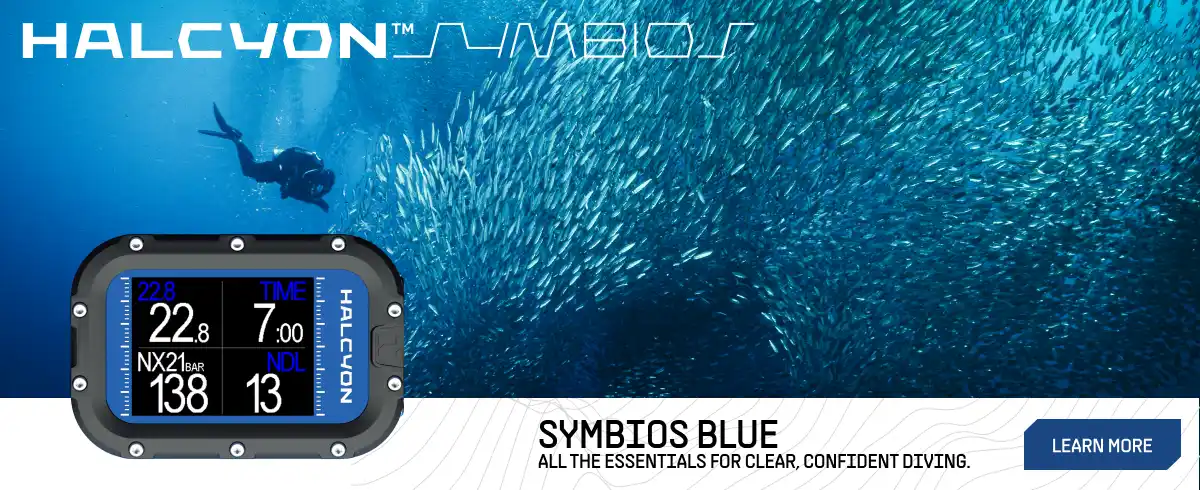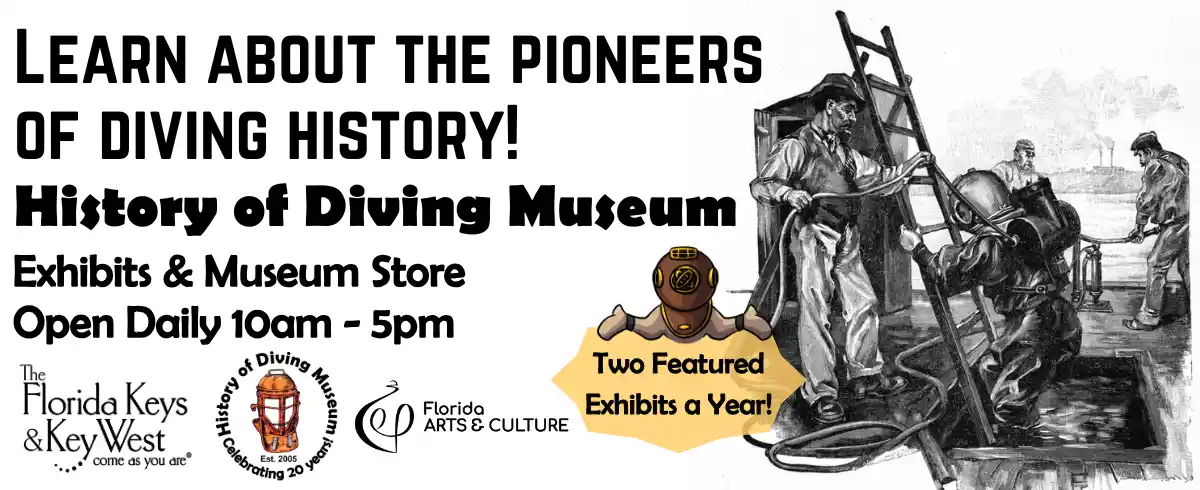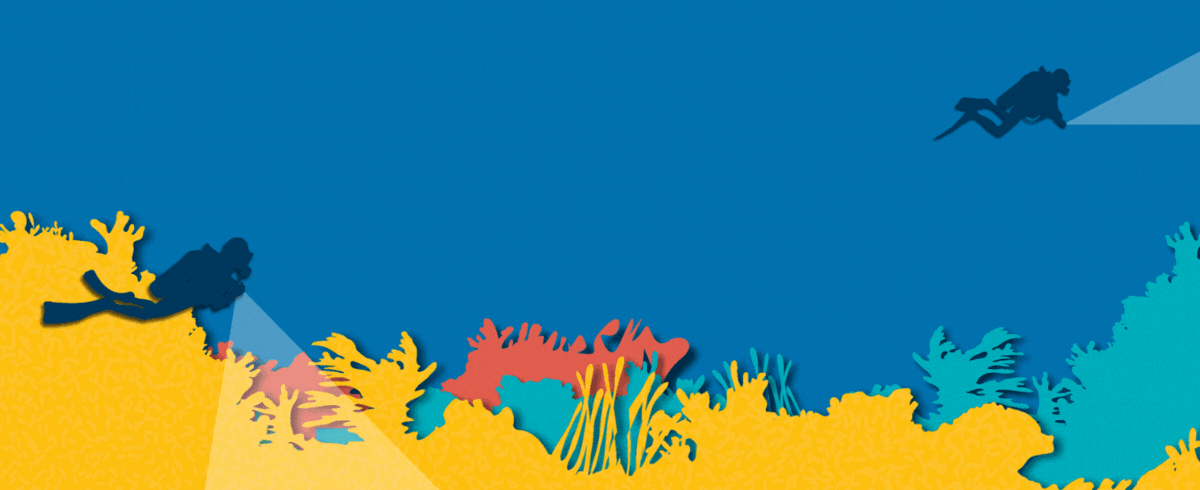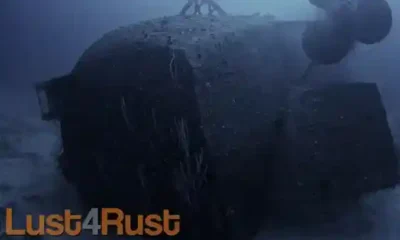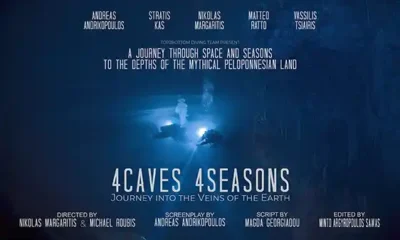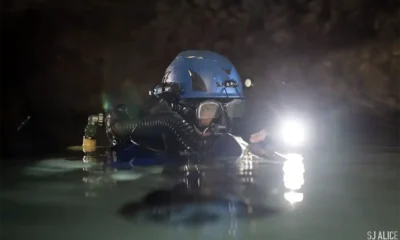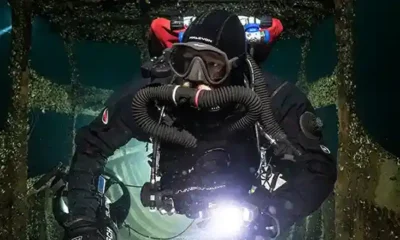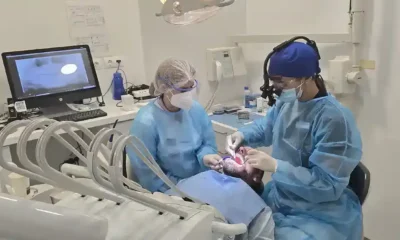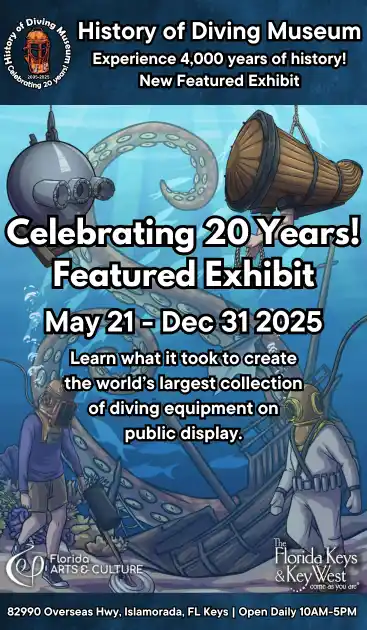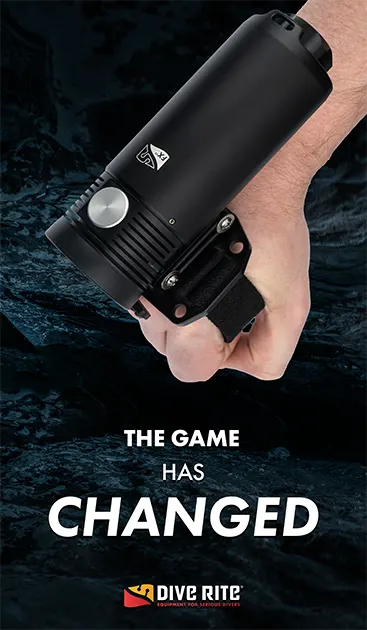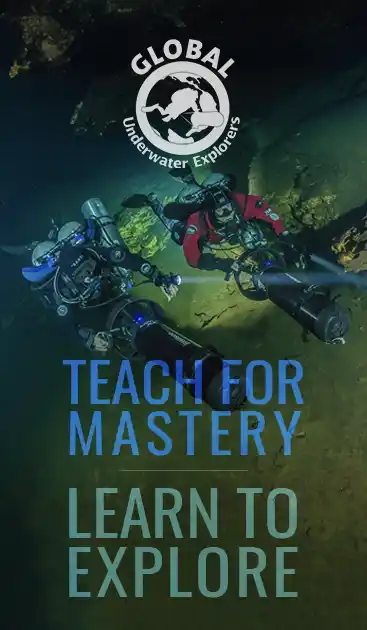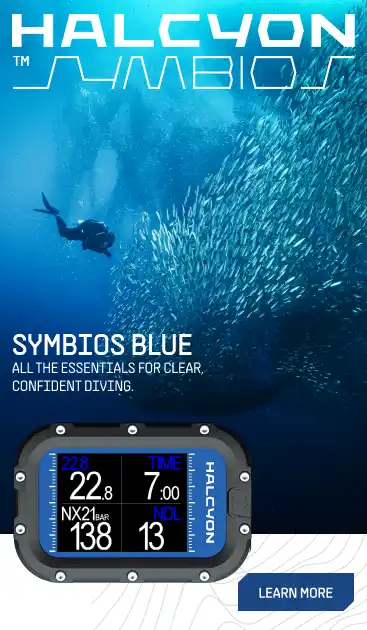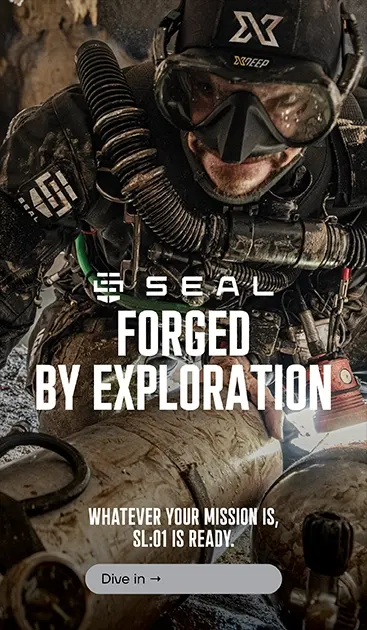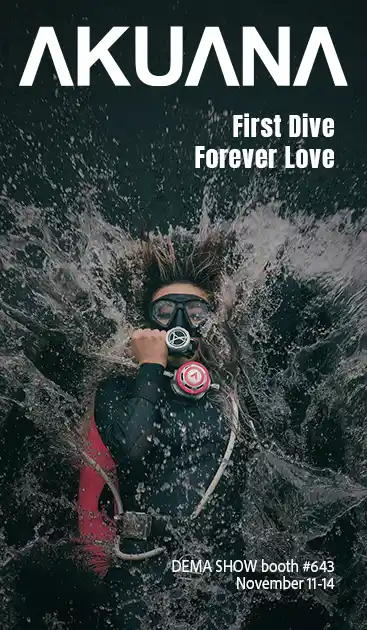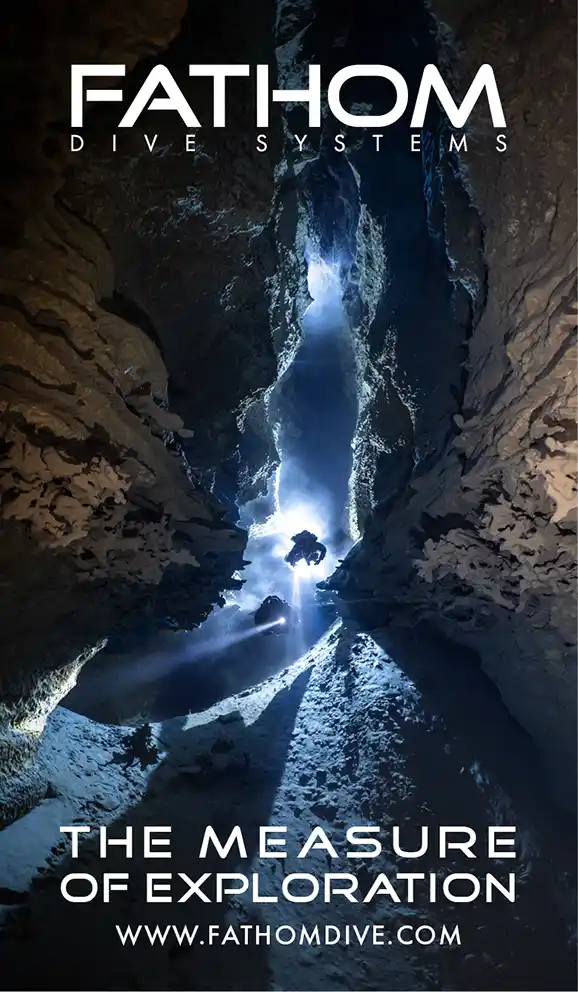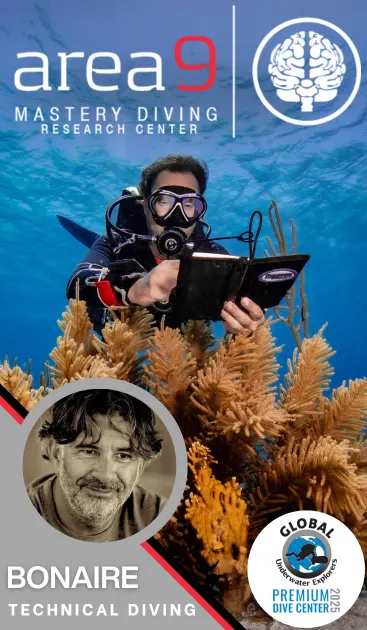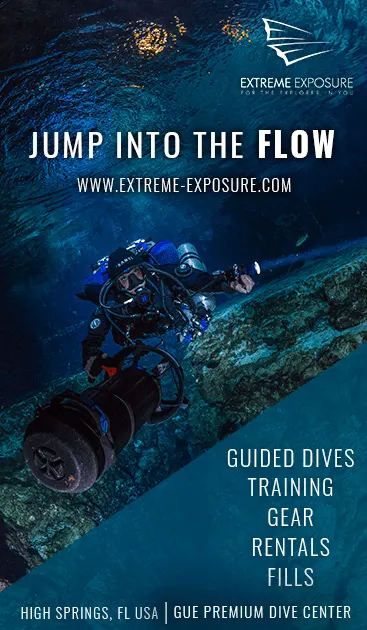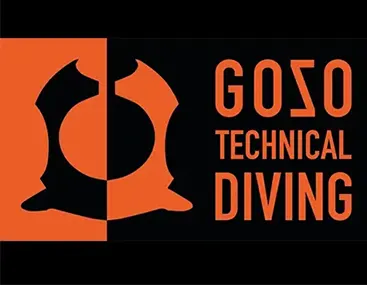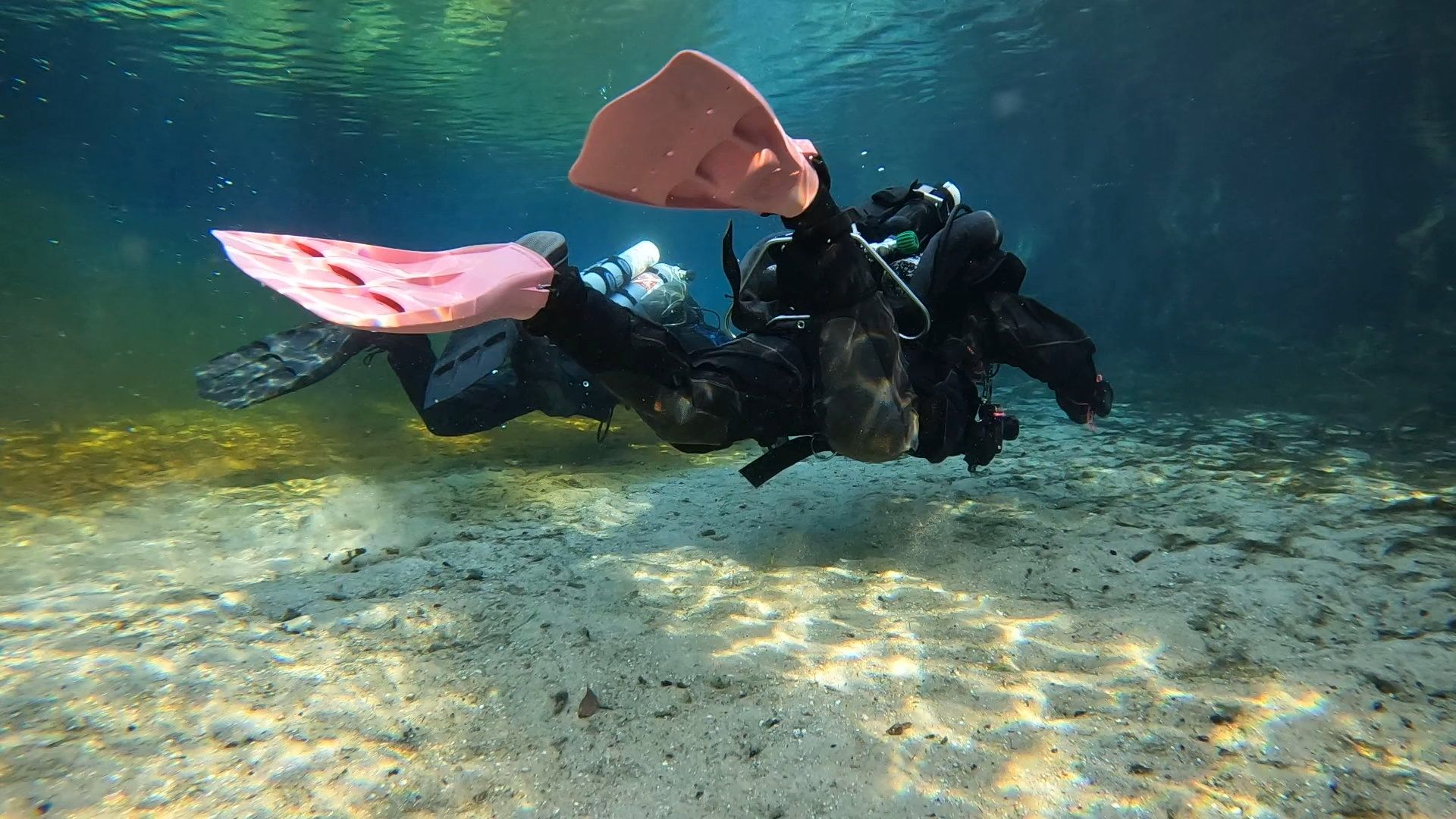
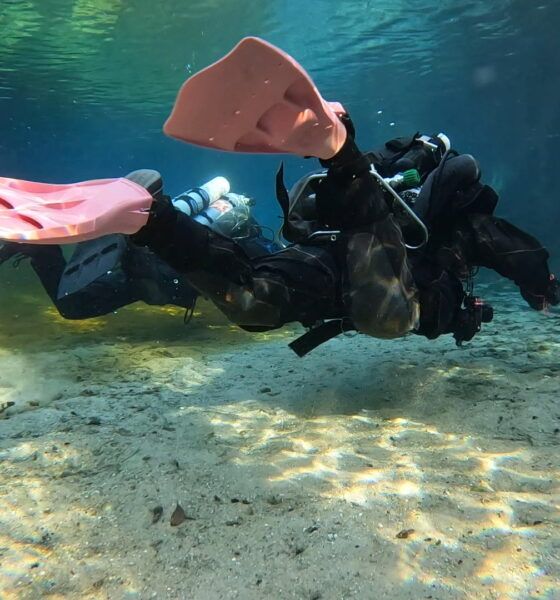
Education
If It’s Worth Doing, It’s Worth Doing Twice: My CCR Fundamentals Adventure
By Greg Hillard. Photos courtesy of the author.
For the more than two decades that I have progressed through my journey as a technical diver, I’ve gained a lot of experience diving wrecks, caves, and reefs. I earned open circuit and CCR certifications from agencies spanning the entire alphabet. Throughout most of this time, I looked at the GUE path with some skepticism and perhaps a little bit of envy.
While on the outside looking in, I felt as though the barriers to moving onto the GUE path were just too much of an investment of my time and resources. After all, I have more cards than a Las Vegas blackjack dealer, so what’s the point of re-learning things I clearly already know? Since GUE doesn’t really offer a crossover or equivalency process for “experienced divers,” I had to start from scratch.
In the summer of 2021, I bit the bullet and enrolled in a GUE Fundamentals course. I joined the course with no intention of continuing with GUE, but I wanted a good tune up. Well, I definitely got my money’s worth: After a few hard days, I finished with a Rec pass and a thoroughly bruised ego.
Circling back to my concerns about barriers to progression through GUE, I really didn’t give it much thought after completing Fundamentals. I still couldn’t justify moving through Open Circuit Tech 1 as I was already a qualified CCR trimix diver and diving at that level quite regularly.
Fast forward to December 2024, when the worst-kept secret in diving history was officially announced. A new GUE program and pathway opened. Was this the shortcut I had been waiting for?
GUE’s new CCR Fundamentals program would serve as a gateway to rebreather diving and, upon successful completion of the program (and minimum experience dives), a student would be qualified to enter the CCR tech 1 program.
Perfect! Sign me up! Not so fast.
The only real barrier to joining a CCR Fundamentals course is that you must have an open circuit tech endorsement. So, off I go to High Springs for another tune-up. Three hard, ego-busting days later, I left Blue Grotto qualified to continue on my new adventure.

My Fundies experience
Day 1 started with coffee: one cup followed by a bowl of Mini Wheats. Then my Teammate and I met our instructor for a marathon day of lecture, equipment configuration, and machine assembly. Although I already had over a decade of CCR experience, I found the materials to be informative and actually served to clarify a few concepts that I really didn’t understand.
I had been introduced to a series of checklists during some of my past CCR training, but I had found them to be unnecessarily complicated and disorganized. I am of the opinion that, if they are difficult to use, people won’t use them. The GUE procedure uses a stick-on build list similar to the gas analysis tape we have all grown to tolerate. Divers verify the linearity of all three oxygen sensors up to PO2 of 1.0 through a simple process and formula laid out on the build sheet.
Divers also conduct a positive and negative pressure test of the completed unit while the oxygen and diluent gases are pressurized but shut off.
This process contradicts the training I had received previously but actually proves the integrity of the breathing loop, bailout regulators, and addition valves all at the same time. Once we completed our checklists, we signed and dated them before attaching them to our machines.
The sun rose on Day 2 with coffee: two cups and a bowl of Lucky Charms. We jumped back into a short lecture about acceptable diluent and open circuit bailout gases, where we learned that GUE has approved both nitrox 32 and air as acceptable for use at the CCR Fundamentals level. That’s right: air! Take a deep breath, let that sink in—it’s probably going to be okay.
Once I had recovered from my deep state of shock, we completed our gas analysis and a rebuild of the mysterious life support devices. It was time to finally get our machines in the water.

Dive, Dive Dive!
The pre-dive checks started with our breathing loop set behind our head and an almost standard GUE EDGE—not forgetting an agonizingly thorough discussion about our pocket contents. Satisfied that the team had everything in place, we retrieved our breathing loops, looked at our PO2 displays, and verified that the gas contained within our rebreathers was indeed safe to breathe. As a team, we all made the signals to switch to our breathing loop and opened our diver supply valves (DSV) to closed circuit mode, starting our five-minute pre-breathe procedure known as CHAOS. The team conducted the CHAOS procedure by communicating with hand signals only. We verified the operation of the automatic oxygen solenoid, heads-up display, automatic diluent valve (ADV), manual add valve (MAV), oxygen supply valve, and scrubber. Once five minutes passed and all team members signaled that they were feeling good, it was go time.
The first dive was mostly spent in less than 1 m/5 ft of water. The primary goal was to get comfortable breathing from an unfamiliar life support system and establish some basic muscle memory for new landmarks. Our instructor took some video that we would later use to fine-tune our trim.
The team eventually surfaced, discussed what we’d done, then descended to about 3 m/10 ft to start the first basic skills.
Later in the day, we got fills and returned to the classroom for more academics.
Day 3 kicked off with two cups of coffee, avocado toast, and one more coffee for the road. Our team convened at a large open sink where we got the opportunity to take our new breathing machines a little bit deeper while staying out of the overhead section of the spring.
On this day, we started really working on developing important skills. Once in about 6 m/20 ft of water, our team established a shaky neutral buoyancy followed by stabilizing our PO2. Once our instructor was satisfied that we were ready, he went on to demonstrate each skill; then, we would reproduce it to the best of our ability. This was where I started to recognize the superiority of the GUE processes over skills that had been taught to me in the past. An example of this would be switching between the breathing loop and our open circuit regulators. My previous training had no clear step-by-step procedure and no standardized method of deploying this life-saving bailout.
The GUE procedure was simply an evolution of the skills already mastered during an open circuit Fundamentals course. Step one: Signal my teammate that I was preparing to switch to open circuit back gas using clear and understandable hand signals not taught during any of my previous closed circuit training. Step 2: Purge my regulator on my necklace with my left hand. Step 3: Close my DSV with both hands then clearly remove it from my yap with my right hand. Step 4: Reach for my necklace regulator with my left hand and start breathing from it. Later in the course, the skill would evolve to switching from the necklace to the long hose, sharing gas, and a few other challenging endeavors.

Day 4 started early with two cups of coffee, a Jimmy Dean sausage and egg on a biscuit (from frozen to delicious in less time than a recreational safety stop), another coffee for the road, and a quick stop at the dive shop to top up my cup.
Our team gathered at a new, slightly deeper dive site where we planned what would be our longest dive to date.
We completed our GUE EDGE followed by CHAOS, then took a few steps down to the water for a bubble check before descending to about 10 m/30 ft. Once on the bottom, our team captain signalled to switch our PO2 up to 1.2 and then verified that both computers were changed to our bottom set point. This process was, again, new to me. In my checkered CCR diving past, we would just individually change our operating PO2 whenever we felt it was necessary with no input from or communication to the team. The GUE procedure has the team treating PO2 adjustments a lot like a gas switch: This serves to keep the team on the same schedule from a decompression (or, in this case, no decompression) standpoint.
The dive site had an open area with lots of room to stretch out and practice our propulsion techniques. We slowly gained proficiency managing our PO2 and tried to achieve optimum lung volume. For those who may be unfamiliar with rebreather jargon, optimum lung volume refers to the amount of gas contained within the breathing loop; we try to keep this volume as small as possible while still being able to comfortably take a normal breath. A CCR diver must make adjustments to this volume by adding diluent during any descent and expelling gas by breathing out through their nose during ascents. As a diver gains experience, they will learn to anticipate these changes and make fine adjustments almost without any thought, much in the same way a proficient open circuit diver makes subtle adjustments to their buoyancy compensator.
Later in the dive, we practiced the skills covered during the previous dives, and then, slowly, our instructor would crank up the complexity. We practiced S drills, valve drills, diluent flushing, and some basic failures that would ultimately end with the simplest solution of just switching to open circuit, dumping the gas out of the loop, and making a safe ascent.

Day 5 got underway with a pot of coffee and two servings of peanut butter Cap’n Crunch
We had planned to arrive at the dive site later in the morning as we only needed one more dive to complete the program; so, I decided to get there ahead of the team and complete the service on my machine at the dive site (and maybe sneak in a 20 minute nap before the rest of the crew arrived).
As I enjoyed a Starbucks double shot cold coffee drink and the Talking Heads played through the speakers of my tired old pickup truck, working off the tailgate, I pulled the lid out of my rebreather with what felt like a lot less resistance than normal. Puzzled by this, I looked down into the can to see all of the contents of my scrubber sitting in a messy soggy pile. At this point I asked myself, “How did that get there?”
A few minutes later, our instructor arrived. Somewhat embarrassed, I showed him the mess I had made for myself. We theorized what might have happened and the best we could come up with is that the hand nut that holds the bottom of the scrubber in place must have worked its way loose during the drive to the dive site. Once I pulled out the lid and scrubber, the bottom plate and nearly five pounds of Sofnolime fell to the bottom of the can. The JJ CCR scrubber has 3 large springs that support the lower scrubber plate, making it impossible for that plate to fall out when the rebreather is fully assembled. Once we were confident that there was no way that this failure could happen during a dive, I set to cleaning up my mess and packing a new scrubber.
Our last dive was preceded by some light pocket talk during our GUE EDGE and CHAOS and an in-water bubble check before a smooth descent to our home base at the bottom of the spring. Once we adjusted our PO2, we commenced to work through all of the core skills. Later, we spent time traversing a circuit of lines run around the open water section of the spring. Nearing our planned limit for bottom time, our instructor presented us with one last challenge.

Final Skills
It was time for what I felt was the hardest skill in the entire program: the dreaded unconscious diver recovery. It might look easy on GUE.tv, but trying to manage six air spaces and make a safe ascent is definitely not a simple process. When my turn came to play the hero part, I followed all the same steps outlined on an open circuit recovery, then added the step of dumping any excess gas from my incapacitated teammate’s counter lungs, followed by a few shots of gas into her wing—and up we went.
Managing the buoyancy while gently protecting an airway and keeping a diver supply valve in our friend’s mouth, we made our way toward the surface. As we broke our way up to the top of the spring I hit the power inflator and flipped my teammate face up toward the sunlight. Ugh, that wasn’t pretty… but it was done.
Later in the day, we completed our written tests, reviewed our areas for improvement, and cleaned up our mythical breathing machines. From start to finish, we had completed over fifty hours of academics and nine hours of dive time. This program certainly provides a diver with the essential skills to safely go forth and gain additional confidence on the CCR—but only if those experience dives are conducted within the limits of the training.
As an experienced CCR diver, this program provided me with a much improved ability to communicate within a team. Simple skills like how to tell my buddy that there is water in my loop, or “Hey, I’m going to switch to open circuit back gas,” are things that I’m happy to add to my tool kit.
Return to the story package— GUE: Scholarships and New Courses
DIVE DEEPER
InDEPTH: Introducing GUE’s new CCR Fundamentals Course
InDEPTH: Excellence In Performance: Introducing GUE’s New Performance Diver Course
InDEPTH: Back to Fundamentals: An Introduction to GUE’s Most Popular Diving Course

Diving has been Greg’s passion since he learned at 16 years old and he has spent the past 25 years trying to find ways to engross himself in the sport, both professionally and personally. His mechanical background has led him to run a small dive equipment manufacturing company. Greg also runs a commercial Dive Boat operation on the Great Lakes during the summer months. Greg Has participated in multiple exploration projects in the Great Lakes region and spends part of his off season diving the caves of Northern Florida. He can be reached at: greg@fullytek.ca

